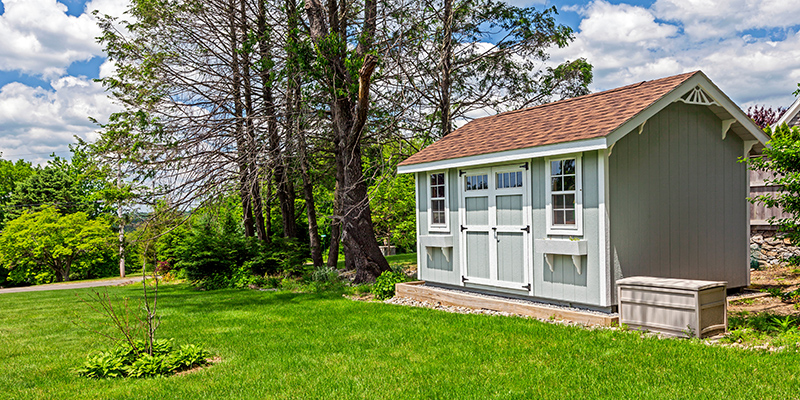HOA Architectural Committee: Function, Role, and Responsibilities

Every homeowners association needs a group of members to inspect and review architectural changes to ensure that the community retains its aesthetic appeal. This is where the HOA architectural committee comes in.
Browse By Category
Sign up for Our Newsletter
Every homeowners association needs a group of members to inspect and review architectural changes to ensure that the community retains its aesthetic appeal. This is where the HOA architectural committee comes in.
What Is an HOA Architectural Committee?
An HOA architectural committee is a committee that oversees architecture compliance in a homeowners association. Homeowners associations typically have strict architectural rules that all residents must follow. The architectural committee simply ensures that homeowners adhere to these rules.
Other names for this committee include:
- Architectural Control Committee
- Architectural Review Committee
- Landscaping Review Committee
- Architectural Review Board
- Design Review Committee
- Environmental Control Committee
- Art Jury
HOA Architectural Review Committee Responsibilities
The exact nature of this committee’s responsibilities can vary from one association to another. In some communities, the architectural committee holds a strong authority over architectural changes. In contrast, other communities only give a specific set of tasks to this committee.
Though, in general, the responsibilities of an HOA architectural committee include the following:
 Managing the application and approval process for architectural modifications, improvements, and changes;
Managing the application and approval process for architectural modifications, improvements, and changes;- Routinely inspecting homes in the community for any breaches or violations of the HOA’s architectural guidelines;
- Reviewing the current architectural guidelines and proposing valuable changes to the HOA board;
- Consistently enforcing the community’s architectural standards;
- Reviewing architectural proposals and recommending decisions to the HOA board;
- Conducting progress inspections for ongoing architectural modifications or improvements to ensure they follow the community’s standards; and,
- Educating the homeowners on the architectural guidelines and the process for approval.
Architectural Review Board Scope of Authority
An architectural committee’s scope of authority can also differ depending on the type of community in question. For instance, a condo association’s architectural control committee typically has fewer items under its scope due to having fewer common elements. The scope of authority for condominiums usually includes the following:
- Balcony flooring, furniture, and plants
- Interior flooring
- Electrical modifications
- Plumbing modifications
- Window designs, covering, and tinting
- Satellite dish placement
- Electric vehicle charging stations
In contrast, the scope of authority for planned developments includes the following:
- Lot setback requirements
- Structure improvement and design
- Exterior materials, paint colors, and finishes
- Roofing materials and colors
- Fencing
- Landscaping
- Solar panels
- Satellite dishes
- Electric vehicle charging stations
HOA Architectural Review Committee Guidelines
The architectural committee guidelines, also known as architectural standards, are a set of rules that dictate what homeowners can and can’t do in terms of design, improvements, and modifications to their property. Every HOA community will have this set of rules, which owners can usually find in the governing documents, particularly the CC&Rs. Self-managed boards should do their best to educate homeowners on what these guidelines are so that they can streamline the review process.
It is important to remember that these architectural guidelines can vary from association to association. This is because every community is different and may have different standards for uniformity. But, some guidelines are more common than others.
Some of the most common HOA ARC guidelines include:
- What color paint a homeowner may use for the exterior of their property
- How high a fence can or should be
- What materials a homeowner may use for their roof
- What type of plants a homeowner may use for landscaping
Additionally, an architectural committee will also have its own set of internal guidelines to follow. These guidelines detail the process of reviewing architectural change applications, including any requirements they must complete.
For instance, most communities give the HOA architectural committee 30 days to review an owner’s request and make a decision. This is so the process and decision are not dragged on, leaving the owner in limbo. In some HOAs, the committee has the power to approve or deny a request. Meanwhile, in others, the committee only has the power to recommend a decision to the board.
After coming to a decision, the association must then mail the decision in writing to the homeowner.
ARC Committee: Beware of Federal and State Laws
Although HOAs tend to exercise a broad range of authority when it comes to architectural changes, boards should remember that there are some federal and state laws that take precedence over an HOA’s governing documents. A good example is the federal Over-the-Air Reception Devices (OTARD) Rule. According to the OTARD Rule, no association can outright prohibit owners from installing antennas or satellite dishes on their property.
For state-level examples, California instantly comes to mind. According to California law, an association can’t enforce a rule that prohibits the use of low water-using plants or artificial turf. Several states have also passed laws protecting the right to an electric vehicle charging station.
The HOA Architectural Review Process
Self-managed communities should establish a standard procedure when it comes to architectural change applications. This will help streamline the process and minimize any red tape.
While you can modify the process to suit your association’s exact needs, the HOA architectural review process should at least include the following steps:
1. Have the Homeowner Complete an Application Form
Create a standard application form that homeowners can fill out with all the important details. This minimizes the back-and-forth and expedites the process. This form should ask for the following information:
- The type of addition or alteration
- The purpose of the addition or alteration
- All of the materials the owner plans to use (including paint colors and finishes)
- Sample plans or blueprints of the project
- The details of the contractor (including licenses, permits, and insurance certifications)
- The timeline for completion
- Scheduled work hours
- Additional details of the project
You may also want to ask owners to get their neighbors’ signatures acknowledging the upcoming project and potential nuisances it may cause, though this isn’t absolutely necessary.
2. Review the Application
Once the owner submits the application, the committee should start reviewing it. Compare the application and the project details against the community’s architectural standards. If the committee lacks information, it can contact the owner and ask for additional documentation.
3. Make or Recommend a Decision
 After reviewing the application, the committee should come to a decision. All decisions must be made in good faith and be reasonable. They must also be made in writing and mailed to the requesting owner. Consistency is paramount here, as arbitrary or inconsistent decisions point to selective enforcement.
After reviewing the application, the committee should come to a decision. All decisions must be made in good faith and be reasonable. They must also be made in writing and mailed to the requesting owner. Consistency is paramount here, as arbitrary or inconsistent decisions point to selective enforcement.
If the committee denies a request, it should include a reason for denial in the letter. This way, the owner can make necessary adjustments to get the project approved. It’s also best to keep a copy of all documentation, including decision letters, for future reference. This will eliminate any misunderstandings and can prove useful in the event of legal trouble.
4. Conduct Frequent Checks
The job of an architectural committee in an HOA doesn’t stop after a decision is made. After approving a change, the committee or a representative should visit the site of the architectural change every so often while it’s still a work in progress. This is to make sure that the owner and contractor remain faithful to the approved plans.
A committee or the HOA board normally has the power to ask an owner to reverse any unapproved changes. This also applies if an owner goes ahead with a project without securing the association’s green light.
Frequently Asked Questions
What happens if I violate architectural guidelines?
If a homeowner violates the architectural rules, they can face a few possible penalties, depending on the HOA. State laws and governing documents permitting, penalties can include everything from fines to a temporary suspension of privileges. The HOA will order the homeowner to correct the violation or reverse an unapproved modification at the owner’s expense. In some cases, the HOA may also take legal action to remedy the situation.
Can the HOA board reverse an architectural approval?
In general, an HOA board can rescind approval of an architectural request, provided the owner has yet to act on the change. The HOA board or architectural committee can make a mistake in their approval, hence, the reversal. However, with the concept of reliance, if an owner has already acted on the approved request, then the board should not rescind it.
Who can join the HOA architectural committee?
It depends on the association’s rules and committee guidelines. Generally, anyone can join the architectural committee. However, it is a good idea to appoint members with an assortment of backgrounds, such as architects, designers, and contractors.
A Big Help to Self-Managed Boards
An HOA architectural committee fulfills an important role in any self-managed association. This committee shares the burden of enforcing and reviewing architectural standards, allowing the board to focus on other decisions. Of course, your board can choose to have the final say on any and all architectural changes.
RELATED ARTICLES:
Trending Now
Related Article
Sign up for Our Monthly Newsletter
Sign up below for monthly updates on all HOA Resource

















